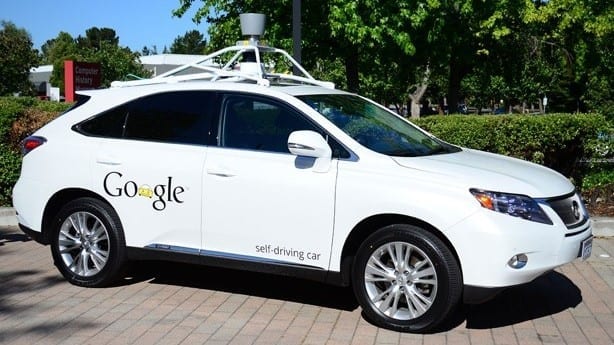The idea of a driverless car or self-driving car was a thing of fiction years ago. That was the feeling of most people, or probably everybody, when a local bank aired an advert on possibility of anything and featured a self-driving car several years back. Who could have thought there would come a time when we will be talking about these vehicles actually existing? Well, dozens of companies have now made giant stride in this automobile technology. We discuss these driverless cars; how they work, and other relevant matters.
About Self-Driving Cars
From the name, you can easily tell what these cars are about. These vehicles are intended to drive autonomously with little or no intervention by a driver. They are equipped with capabilities to sense their environment and navigate around independently.
These automobiles are also often referred to as autonomous cars (or autonomous vehicles). Since the 1920s, efforts have been made at automating vehicles. But the closest resemblance to an autonomous vehicle did not appear until the 1980s. It has been argued that what we have, as of today, cannot be really described as ‘autonomous,’ but rather ‘automated.’
The proponents of self-driving cars have identified certain benefits that come with these vehicles. One of the major expected advantages is, surprisingly, reduction in crashes – based on the argument that these vehicles are always observing. The cars will also help reduce the stress of driving, cut labour costs (on drivers), and create more leisure time, amongst other benefits.
Classification of Autonomous Vehicles
Driverless cars fall into different levels on the basis of a driver’s involvement in their control. The six-level classification system by the Automotive Standardisation Organisation SAE International is often used for categorisation.
Level 0 – Vehicles in this category have systems that cannot control them at all, but merely issues warnings to drivers.
Level 1 – Vehicle control is shared between the driver and the automated system. For example, the system may regulate speed while the driver controls steering.
Level 2 – The automated system is in full control of a vehicle in this case. But monitoring by a vigilant driver is needed and this may require the driver to have his hands on the wheel.
Level 3 – Cars in this level allow the driver to turn their attention to entirely different tasks from driving. There is still need for the driver to be prepared to act within maker-specified time, though.
Level 4 – Driver attention is not required for the control of vehicles in this category. He can even sleep while the car is in motion in certain areas or circumstances. But the driverless car must be able to be able to park autonomously, especially when outside the geo-fenced areas.
Level 5 – This describes fully autonomous vehicles that require no human intervention at all. They are also known as ‘wheel optional’ cars.
As of today, there are no fully autonomous self-driving cars that are permitted on public roads. They still require a driver to be present to take control at short notice.
Driverless Car Technology
Driverless cars are built-in on sensors, control algorithms (software), and connectivity.
Sensors
These enable the vehicles to learn about its surroundings to figure out navigation paths. They include ultrasonic sensors, odometer sensors, radio detection and ranging (radar), light detection and ranging (lidar), computer vision, GPS, and preloaded maps.
Connectivity
This has to do with access to the cloud for information that can impact a self-driving car’s movement. This includes information on weather, road infrastructure and construction, nearby cars, and driving surface conditions. This helps to anticipate and avoid dangers on the road.
Control algorithms
Information gathered by the sensors and connectivity features are interpreted by this software. This is vital in the decision making process of the vehicles. Control algorithms guide decisions on speed, steering and braking, amongst others. They help to avoid obstructions and prevent collisions. Most autonomous vehicles use Bayesian Simultaneous Localisation and Mapping (SLAM) algorithms.
Developments in the Self-Driving Car Industry
With driverless cars considered the future of the automotive industry, more and more companies are getting involved. These include companies that are ordinarily not into auto production. Notable actors in the industry include:
Google (Alphabet)
This Internet giant has been working on self-driving cars for years and has working prototypes. In fact, the Google Self-Driving Car Project is one of the autonomous vehicle schemes that have been around the longest.
The company reportedly uses the lidar sensor technology for its cars. A fully autonomous prototype with no steering wheel or brake and gas pedals was unveiled in May 2014.
The company planned to make the cars available by 2020. Google’s parent company Alphabet Inc. has now spun off the self-driving car technology into a company known as Waymo.
Tesla
Chief Executive Elon Musk of Tesla Motors has said the company should have fully autonomous cars in two years, according to a TechWorld report. The company has already released semi-autonomous Tesla Model S vehicles and promised mass market-targeted Model 3 offerings. Tesla uses a piece of software known as Autopilot, featuring advanced camera sensors for detecting obstacles and switching lanes.
Uber
Popular ride-sharing company Uber formally joined the driverless car race in 2015 with the launch of its Advanced Technologies Center. And it now has its own self-driving cars and even agreed a deal September 2016 for public testing in Arizona.
The first prototypes were unveiled in May 2016. To help its research, Uber has been actively tapping experts from elsewhere, including Carnegie Mellon Robotics Lab. It is also working with University of Arizona researchers.
The company was sued in February by Google’s self-driving car company in connection with its hire of a former Waymo employee in possession of trade secrets.
Other notable names involved in the autonomous vehicle space include Ford, Volvo, Bosch, BMW, and Audi.
Potential issues
There are certain concerns over possible problems that could result from the use of driverless cars. These include:
Safety – While proponents argue they are a lot safer, self-driving cars are considered by some as risk due to lack of human control. Vehicles from leading players, such as Waymo, Tesla and Uber, have all been involved in crashes, with a couple resulting in fatality.
Job loss – Another fear is that these vehicles could reduce labour needs. That is, they can render many drivers redundant.
Attacks – Hackers could compromise information sharing and cause unpleasant outcomes. Terrorists may also use driverless vehicles for bombings.
Potential issues also include greater fuel consumption – when people choose to live farther from workplaces due to eliminated driving stress. This could, in turn, lead to greater carbon emission.
Do you look forward to commuting in a driverless car? Experts suggest there may still be need to wait up to a decade before such vehicles can hit public roads.







